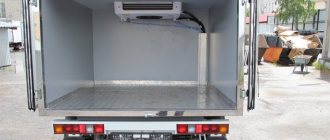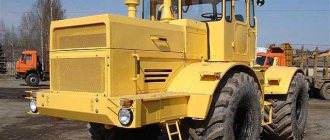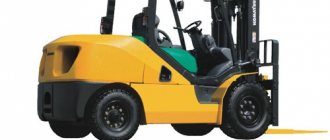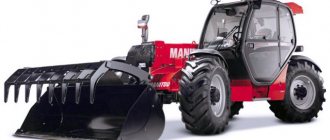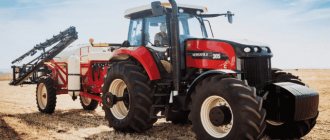It would seem that a refrigerator is a refrigeration unit. This is partly true, however, more precisely, it is a vehicle that is designed to travel on roads. Let's consider the types, features and repair of refrigerators.
Since ancient times, people have been looking for a way to transport perishable products, coming up with various technologies and devices for this. But progress did not stand still, and with the advent of the first refrigerators, carriers began to think about how to install it on cars.
This led to the creation of refrigerators. Moreover, refrigerated cargo transportation requires storing products at a certain temperature. The climate inside the installation does not depend on the external environment and is maintained throughout the delivery of the cargo.
History of origin
A van was adapted for the transportation of perishable products, but not an ordinary one, but an isothermal one. He himself could maintain a constant temperature for a long time and was able to transport refrigerated products over short distances. For larger ones, more serious transport was needed.
So the first refrigeration unit on wheels was invented in the USA in 1938 by J. Numero and F. McKinley Jones. It was charged from a battery and was capable of cooling the entire volume of the thermally insulated body, which separated the internal environment from the influence of the external one.
Soon the Thermo-King company was formed, which later became global. Its equipment was also supplied to the USSR.
The widespread use of special equipment began in the 50s of the last century.
The transport refrigeration unit was the first to be used by ice cream companies. Then, they began to transport frozen meat and fish. Transportation of perishable goods has reached an international level.
In the USSR, a single-axle all-metal refrigerator semi-trailer OdAZ-826 in the form of a van was developed for regional destinations. Towing was carried out by ZiS-120 tractors.
Within the socialist countries, the famous Czechoslovak Alka reefer was supplied to carriers, designed to work with Skoda-LIAZ and KamAZ tractors.
What to consider when choosing?
Special equipment is selected taking into account the characteristics of the goods that are planned to be transported. Isothermal vans are used for transportation:
- Food products.
- Drinks.
- Medicines.
- Fresh flowers, etc.
Our company offers various modifications, so it is not difficult to choose an option taking into account the purposes of use. Before choosing, be sure to take into account certain nuances:
- Total weight.
- Dimensional characteristics.
- Durability level.
- The degree of thermal output.
- Features of equipment.
- Exterior, etc.
Refrigerated trucks you can buy today
Based on temperature they are divided into the following groups:
- 1st category, intended for the delivery of refrigerated goods (at temperatures up to plus 1 degree);
- 2nd category, for the delivery of frozen goods (from minus 1 to minus 20 degrees);
- multi-temperature installations (multi-compartment, with different temperatures in each);
- combined - with the ability to install an environment inside the van from plus 10 to minus 20 degrees.
By type of drive there are:
- with electric drive (for small compartments);
- driven from the power unit (for volumetric compartments);
- with water cooling.
By body length (for container installations):
- 6 meters;
- 12 meters;
- 13.5 meters.
By weight of transported cargo:
- light 1000 – 3000 kg (local transportation);
- average 3000 – 5000 kg (regional);
- heavy 5000 or more (international).
Structurally, automobile refrigeration units are divided into several types: a van or container, as well as a trailer, semi-trailer or truck on a chassis mounted on a truck.
Types of refrigeration units
Based on the method of supplying electricity to the compressor, the following types of refrigeration units are distinguished:
- With direct drive. The power supply is supplied from a car engine, which is connected to the compressor by a transmission belt - V-shaped or elastic. The clutch is located on the compressor shaft. The ventilation equipment is powered by vehicle electricity. This type of refrigerated equipment is used only for small-sized vans when transporting small quantities over short distances, for example within a populated area. Such refrigerated trucks are unsuitable for long-distance intercity and international transportation, since refrigeration units do not operate during stops.
- With eutectic slabs with antifreeze filler. Used in small and medium-sized vans used on routes with frequent stops and door openings. Such stoves are connected to a power source at night and cooled to -30°C. During the day, they radiate cold into the interior of the cargo compartment. The panels do not produce cold on their own.
- From an autonomous power source - diesel generator or batteries. This is the most common type of refrigeration equipment used for large-capacity vans - up to 100 m3. Used for transporting large consignments of frozen goods over long distances.
According to the temperature regime created in the van, refrigeration units are divided into classes:
- A – 0…+12°C;
- B – more powerful equipment capable of cooling the air in the van to +12…-10°C;
- C is a powerful type of installation that cools the air to -20°C.
The most powerful are reinforced type refrigerators, capable of operating at relative air humidity up to 75% and in the temperature range -45...+45°C.
Classification
Delivery of goods within the city and the nearest suburbs is carried out by vans with a small load, for example Gazelle refrigerators.
Cargo transportation in Russia is carried out by medium-sized trucks and road trains - a truck tractor coupled to a refrigerator mounted on a semi-trailer frame. Most of them are branded machines of retail chains that connect stores and grocery terminals in different regions.
International destinations are usually served by couplings with the most powerful refrigeration units in the tractor-semi-trailer or truck-car-trailer configuration.
Such vehicles are capable of transporting up to 25 tons of cargo at a constant temperature throughout the trip. In addition, they are equipped with the most modern navigation systems, making delivery high-quality and safe.
Transportation Features
During the entire cargo transportation, the refrigeration unit allows for the delivery of perishable cargo. Moreover, refrigerated cargo trucks move any distance, in a timely manner and without loss of product quality. The main types of products transported in such vehicles are divided into three categories:
- stored for more than two months. These include deep-frozen products - fish and meat;
- shelf life up to a month. These are sausages and meat products, dairy products, confectionery;
- shelf life up to several days. Such as: pharmaceutical products, cakes, fresh fish.
Due to the large territory of the Russian Federation, the popularity of road transport in special vans with a refrigeration unit is constantly growing. The number of companies transporting perishable products is expanding, and for this it is necessary to have a large fleet of vehicles.
And repairing refrigerators is not the least important thing. Although timely maintenance will help reduce the risk of breakdown and the need to repair the refrigerator.
Advantages
- Large list of areas of operation;
- Transportation of goods under different conditions and temperatures by placing them in isolated compartments with the required environment;
- Delivery of large volume products;
- Preservation of the initially specified properties of goods;
- Air circulation;
- Management of microclimate creation.
So what is a refrigerator? This is a set of components and systems designed for transporting and storing perishable goods, as well as maintaining product characteristics at a given level.
The design of these vans keeps the temperature constant throughout the entire product delivery process. The type of trucks used depends on the category of cargo and the distance. Let's look at the example of the Alka semi-trailer at the main advantages of refrigeration equipment.
Semi-trailer Alka N12
Gathered in Czechoslovakia. The van was created to be coupled to a Skoda-LIAZ tractor and was designed for transporting chilled and frozen products.
An isothermal body with BIS special refrigeration equipment was installed on the frame. The temperature was regulated automatically. The body was equipped with a mechanism for transporting carcasses on hooks.
Inside there was a division into two compartments - cargo and engine. The cargo compartment had doors installed, and the interior was insulated with polyurethane foam and lined with aluminum sheets. The engine was located in front of the semi-trailer. It was equipped with a refrigeration unit, and the evaporating surface was brought into the cargo room.
Isothermal van
An insulated van is a container for transporting goods, which is lined on top with materials for thermal insulation. Such an installation is not connected to the engine in any way; the design does not contain equipment that can lower or increase the temperature to the specified parameters. The main purpose of the van is to maintain the initial temperature of the transported goods for a long time. An isothermal van works on the principle of a thermos, which keeps tea hot for some time even without a heating element in its design.
An insulated van has the same disadvantages as a regular thermos - it cannot maintain temperature for a long time. Despite the insulation materials used, heat or cold from outside still begins to seep into the van over time.
Device
The walls of modern isothermal trucks are made of sandwich panels. They have a thickness of 40-80 millimeters and are connected to each other by sheathing sheets. The joints are well insulated to prevent condensation. The door leaves are framed around the perimeter with a seal. All these measures serve to prevent environmental influences on the internal environment of the body.
Thermal insulation is polyurethane foam, which is used to line the box of the van. This material has low thermal conductivity, is resistant to mold, and is environmentally friendly.
The strength of the body and low weight are ensured through the use of modern materials and frameless assembly, which increased the load capacity.
For cladding inside and outside use:
- galvanized sheet coated with polymer;
- clad steel sheet;
- laminated plywood;
- stainless steel;
- aluminum sheet.
The floor consists of a sandwich panel covered with galvanized steel sheets.
Refrigeration equipment can be monoblock or separate. Monoblock - the evaporator and condenser are made in one block.
There are various options for installation type:
- working units in the van;
- the evaporator is in the truck, and the condenser is outside;
- on the roof or on the front wall.
Doors and accessories
Isothermal refrigerators are equipped with highly durable doors. Previously, such vans could not be opened from the outside. Currently, mechanisms are used that significantly simplify operation.
The body can be equipped with shelving, door latches, lighting systems and advanced locking mechanisms. There is a complete ventilation system, forced filtration and circulation of air masses. Full-fledged refrigerated vans are widespread among modern businessmen and greatly simplify their activities.
